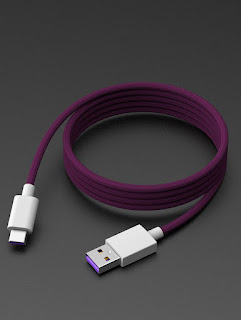Introduction
In today's digital age, where our smartphones have become an indispensable part of our daily lives, the importance of mobile data cables cannot be overstated. Whether you need to charge your phone, transfer files, or connect your device to other gadgets, having the right mobile data cable is crucial. In this comprehensive guide, we will explore everything you need to know about mobile data cables, from different types and connectors to tips for choosing the best one for your needs.
Types of Mobile Data Cables
1. USB-A to Micro USB: This type of cable is one of the most common options for charging and syncing older Android devices, Bluetooth speakers, and other gadgets.
2. USB-A to USB-C: With the rise of USB-C technology in modern smartphones, tablets, and laptops, this cable is becoming increasingly popular for fast charging and high-speed data transfer.
3. Lightning Cable: Designed by Apple, the Lightning cable is used to connect iPhones iPads and iPods to computers chargers and other accessories.
4. USB-C to USB-C: This cable is commonly used for charging and data transfer between devices that feature USB-C ports, such as newer Android smartphones, laptops, and tablets.
Tips for Choosing the Right Mobile Data Cable
1. Compatibility: Make sure the cable you choose is compatible with your device's port (Micro USB, USB-C, Lightning) to ensure seamless connectivity and functionality.
2. Durability: Look for cables with reinforced connectors, braided nylon, or other durable materials to prevent fraying and ensure long-lasting use.
3. Length: Consider the length of the cable based on your needs, whether you need a short cable for portability or a longer one for convenience.
4. Speed: If you require fast charging or high-speed data transfer, opt for cables that support fast-charging protocols like Qualcomm Quick Charge or USB 3.0 technology.
5. Brand Reputation: Purchase cables from reputable brands or manufacturers known for producing high-quality products to avoid potential issues like overheating or damage to your devices.
Conclusion:
Mobile data cables play a crucial role in keeping our devices powered up and connected in today's digital world. By understanding the different types of cables available, knowing what to look for when choosing one, and following best practices for usage and maintenance, you can ensure a seamless and efficient experience with your devices. Invest in a quality mobile data cable that suits your needs, and enjoy hassle-free charging and data transfer wherever you go.
.jpeg)


Comments
Post a Comment